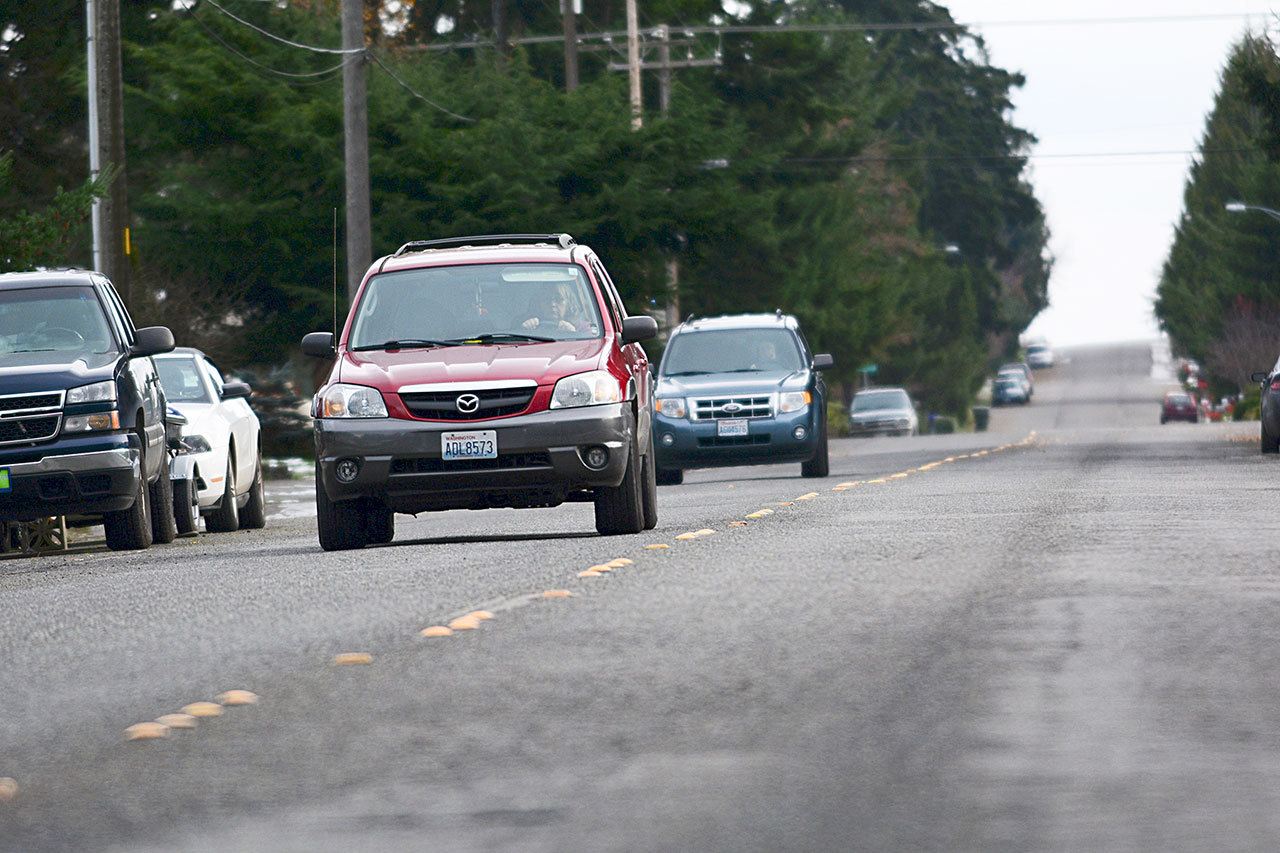PORT ANGELES — The Port Angeles City Council is leaning toward asking voters to approve raising the sales tax to fix some of the city’s worst roads.
That increase of up to 0.2 percent in sales tax would come after voters approved a Transportation Benefit District, which city staff told council members during a work session Tuesday is needed to help plump up the city’s street fund.
“Revenue is not keeping up with expenses, and we’ve been tapping into reserves,” said Craig Fulton, public works and utilities director.
Fulton told council members the city has two options for implementing a Transportation Benefit District, which would likely encompass all of the area within the city limits. The council would serve as the benefit district board.
The first option, which doesn’t need voter approval, would allow the city to add a fee up to $20 per vehicle registered within the district. After two years, the city would have the option to increase that fee to $40.
The annual expected revenue from the $20 fee would be $325,000 for the street fund.
The second option, which council members preferred, must be approved by a simple majority of voters.
If approved, there could be a 0.2 percent sales tax increase, expected to bring in close to $650,000 to fund road repairs.
The sales tax is 8.4 percent in Port Angeles now.
The district also could implement an annual vehicle registration fee ranging from $20 to $100, which could raise between $325,000 to $1.6 million.
All money raised by the Transportation Benefit District is required by law to go toward transportation improvements.
Mayor Patrick Downie noted a consensus among council members present — Dan Gase and Brad Collins were absent — to pursue the second option.
If the city chose the first option, it would put the burden only on residents of Port Angeles, when there are many others who contribute to the wear and tear on the roads, Downie said.
“An up-to-0.2 percent tax is paid by everyone that rides on our roads, not just us,” he said. “We get a lot of visitors.”
Fulton said a district would not solve all of the street and alley issues facing the city.
But he said it would help improve city byways that are replete with “poor” ratings under the widely employed StreetSaver computer-based street management system, which uses a Pavement Condition Index.
In the last survey, the overall condition of the roads was 35, with streets sitting at 43 and alleys at 5, Fulton said, adding an optimal rating would be about 75 or 80.
The city can apply for grant funding for road repairs, but only for arterial streets.
Arterial streets make up 14 percent of the city’s streets and still require a 12.5 percent match from the city, Fulton said.
At that range, it’s much less costly to maintain the roads, he said.
“It will take tens of millions of dollars to get our roads to good conditions,” he said. “This is not the final solution; it’s just a start.”
City Chief Financial Officer Byron Olson suggested the city make a list of projects that would be done before asking voters to approve the district.
Without that list, taxpayers don’t know what they are getting, he said.
It’s also important, he said, that the funding produced by the taxing district wouldn’t replace any existing funding.
Fulton said he has heard from residents who would like to see work on Railroad Avenue, alley improvements, intersection street signs, school sidewalk construction, ramps, walkability improvements and bike lane improvements.
________
Reporter Jesse Major can be reached at 360-452-2345, ext. 56250, or at jmajor@peninsuladailynews.com.

